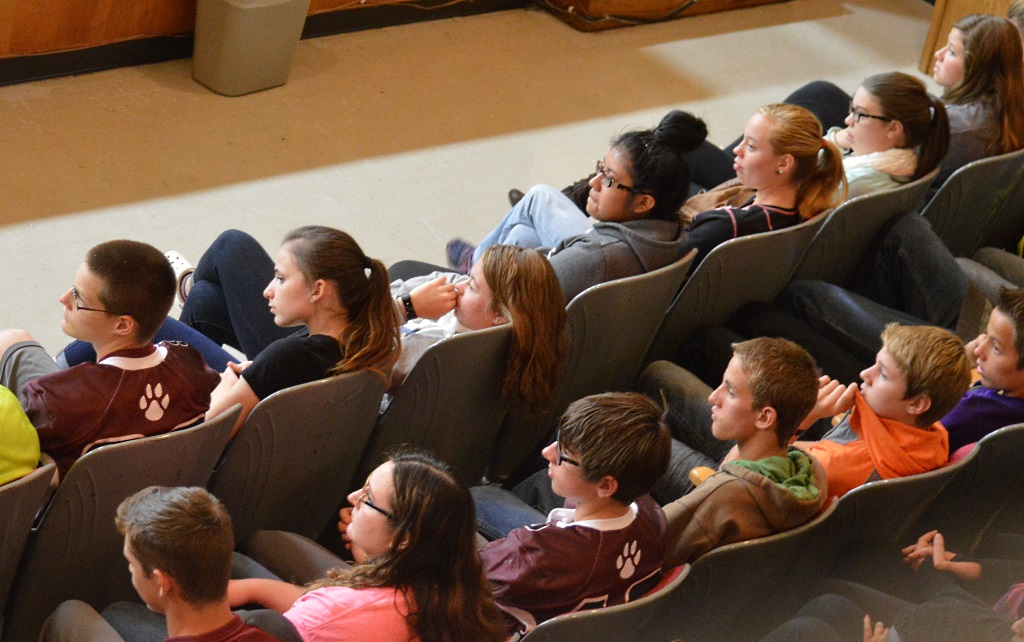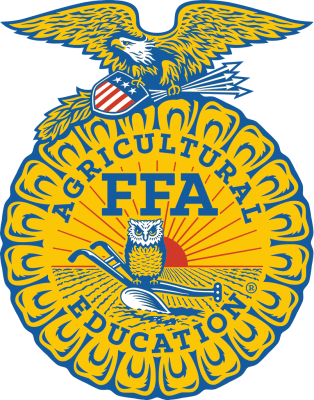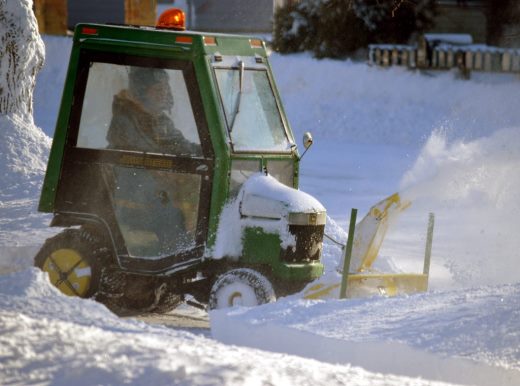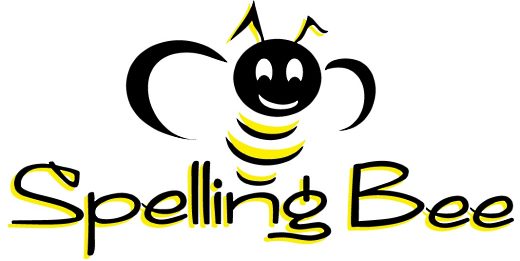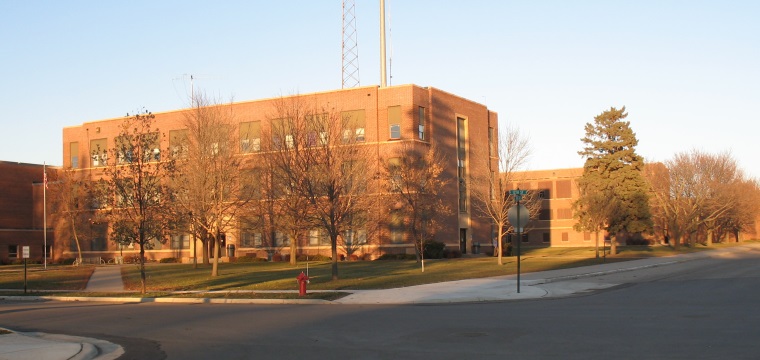Chad Sheehan of Sheehan Strategic Solutions begins training process for K-12 MLPS students
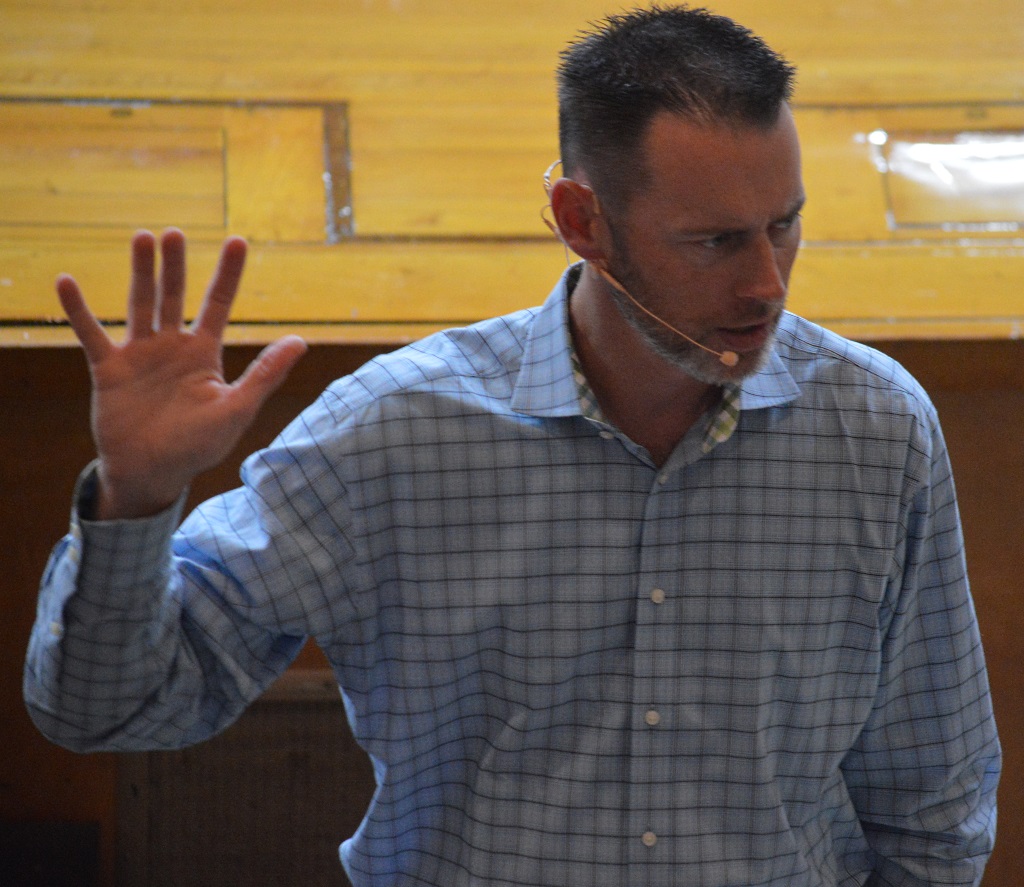
Surviving a violent encounter is used to create the acronym for the violent situation training program, “S. A. V. E. Yourself.”
Students at Mountain Lake Public School (MLPS) took the first steps in the training process when Chad Sheehan of Sheehan Strategic Solutions from Sioux City, Iowa, presented four age-appropriate language and content sessions to grades K-12 on Tuesday, October 25. Education basics were given separately to grades 6-8, 9-12, K-2 and 3-5. Each grade level learns something different, and what they realistically could do if a violent situation were to break out. Students could opt-out of the training.
In late August, all staff at MLPS was trained in the program, training that included a three-hour lecture backed by hands-on scenario drills using air-soft pistols, along with direction on how to create a classroom “survival bucket.”
He returned to MLPS this October to begin school-wide training for students.
About Chad Sheehan, Sheehan Strategic Solutions
Sheehan is a 23-year veteran of Law Enforcement who recently retired from Sioux City Police Department patrol to focus ful-time on the “S. A. V. E. Yourself” program. During his tenure, he was assigned to the hostage negotiation unit, was a field training officer, an Honor Guard member and a member of the Critical Incident Stress Management team. On top of developing “S. A. V. E. Yourself,” Sheehan is a certified instructor in Rapid Response, Conflict Resolution, Tactical Communication and DARE (Drug Abuse Resistance Education).
He previously worked as school resource officer at a Sioux City high school with over 1,200 students and 200 staff members.
With children at home (an eighth-grader, two fifth-graders, a first-grade student and a pre-schooler), Sheehan has made surviving workplace/school violence/active killer a top priority in both his professional and personal life. “S. A. V. E. Yourself” has been taught to approximately 20,000 people in 13 states, and will soon be moving into two more, with audiences pulled from schools, businesses, hospitals and military bases, to name four. Sheehan has also provided training in crime prevention topics to hundreds of businesses and schools while educating thousands throughout his career.
Sheehan Strategic Solutions, LLC uses Sheehan’s expertise to provide training/consulting to civilians in the area of surviving violence with an emphasis on surviving the threat posed by workplace/school violence and today’s active killer.
Training will focus on prevention, recognition and a proactive response. Emphasis will be placed on the proactive response to violence.
He bases the “S. A. V. E. Yourself” on Department of Homeland Security and United States Department of Education recommendations for responding to a mass casualty incident – Run, Hide, Fight.
Empowerment to the real ‘first responders’
“The people involved in these situations are the real ‘first responders,’ as it takes a few minutes for the professionals to get there.,” Sheehan explains. “What I will be telling you about are tools you can use wherever you may be – at school, at home, in a restaurant or mall or at church – so that you are prepared.”
The average length of these incidents is 3-6 minutes, “so a quick reaction equals success,” stresses Sheehan. In discussion about scenarios, Sheehan explains that the majority of the time, such a situation involves a single attacker, and, even if there are two involved, they more than likely will remain together, rather than separate to different parts of the building.
Sheehan noted that young children are taught about “stranger danger,” and repetitive tornado and fire drills are conducted for all ages so that everyone knows what to do. This training is another type of preparation for a situation that may or may not occur, just like tornadoes or fire.”
He told the students in grades 9-12 taking part in this session that before violence erupts, there are ways to prevent such a situation. “In fact, prevention is the most important factor.”
Sheehan points out that stress factors that could lead to violence can be divided into two groups – what is going on in one’s life at school, or what is going on in one’s life at home. Research shows that the most commonly-shared factor that connects a person to violent action is someone who feels bullied, picked on, isolated. “Other factors include having an angry personality due to conflicts/grudges around a person(s) or the school or workplace, or the break-up of a relationship, whether it be parents or in a peer relationship,” lays out Sheehan. “Maybe they are threatening to hurt themselves, or have an unusual fascination with violent events or have a sudden interest in firearms. If you see more than one of these factors, the individual might need some help. Reach out to them, or get an adult involved.”
Delving into specifics about surviving a violent encounter, “S. A. V. E. Yourself” training means –
+ S – Shelter in place or barricade yourself in whatever way possible.
+ A – Awareness. (Maintain situational awareness.)
+ V – Violence Stops violence. (Fight back at last resort.)
+ E – Evacuate. (Know multiple evacuation routes.)
The end goal of the program is for people to, “be empowered to do more than go hide in a corner; proactive rather than reactive,” says Sheehan. “Being empowered absolutely increases chances of survival.”
“When confronted with such incidents, mindset is probably going to be one of the most crucial factors,” shares Sheehan.
Training centers around these three general principles –
+ Run: It is no longer acceptable to offer a Lockdown-only response. If safe to do so, school staff will attempt to rapidly evacuate the building, with students going to pre-designated “rally points.” This rapid evacuation may include multiple and non-traditional routes out of a building or location).
+ Hide: If rapid evacuation is not possible, staff will attempt to shelter/barricade in place and make every attempt to keep a violent intruder away from students. Any and all methods to create barriers will be used. While sheltering in place, students will be asked to assist in barricading as staff is evaluating secondary evacuation options and preparing to defend students as a last resort. Students will be taught to district and evacuate at age-appropriate levels, if the room is compromised.
+ Fight: Fighting back as a last resort is just that – a last resort. This option, as it relates to middle school and high school students, is not necessarily about getting into a physical fight, but, instead, about doing things to be a more difficult target or to break away from the situation if confronted by a violent intruder. Creating a distraction (throwing something – whether heavy or even paper or scattering, like in a game of tag) in order to run out the door to shelter is a crucial part of the fight. Elementary students are NOT be taught to physically attract intruders, but, ALL students are taught how to be more difficult targets by creating distractions, moving and reacting quickly to danger.
Do anything to save yourself
“You can do anything – anything – to save yourself,” stresses Sheehan. “I can give you the options – you do whatever you believe is your best chance for survival.”
He also noted that it was important to work as a team – just as learned on the field, or court, mat, track, course or ice because, “Any action one takes might help someone else.”
As important is preventing a violent situation from happening, which falls back to the #1 factor for students committing such acts – being bullied. Sheehan told the students, “You can control what you do in helping to prevent bullying from occurring. I encourage you to get to know others different from you. You can make a difference.”
As this training is an on-going process, Sheehan will return to execute hands-on drills and exercises with new staff, as well as students. He also explained that school staff is available to hold conversations in their classrooms addressing specific “What ifs?”
